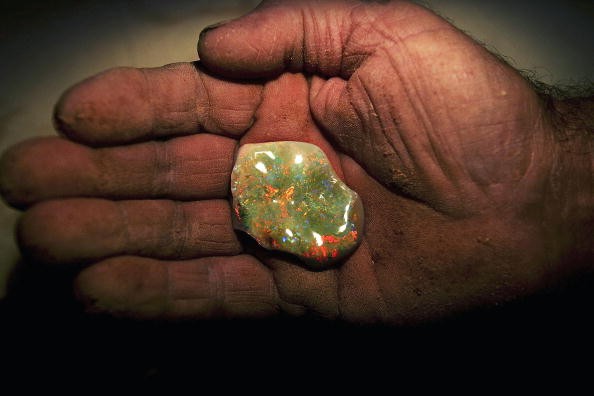Martian Life Evidence? Scientists Discover Opal Stones On Red Planet
| KJ Belonio | | Jul 09, 2015 05:28 PM EDT |
(Photo : Getty Images/Ian Waldie) University of Glasgow’s School of Geographical and Earth Sciences professor and lead study author Martin Lee said the latest findings confirm evidence of opal from Mars mission and provide a target for future experiments.
Is there a possibility that Martian life exists? In a recent study published in the Meteorites and Planetary Science journal, University of Glasglow scientists revealed they have found a significant discovery — the presence of opal in a Martian meteorite, which, on Earth, can suggest the presence of microorganisms.
Like Us on Facebook
In spite of the fact that past explorations have already revealed the presence of opal deposits, the latest finding is the first direct proof of a gem known as a "fire opal" on Mars. According to Science Recorder, the presence of opal, which is a gemstone often formed around hot springs where microorganisms thrive on Earth, is vital in detecting traces of ancient alien life on the Red Planet.
Discovered in the Egyptian town of Nakhla in 1911, the opal in a tiny 1.7 gram fragment of the "Nakhla" Martian meteorite was blasted away from the Martian terrain by a massive impact of unknown origin millions of years ago, University of Glasglow researchers said in a statement. These opal or "fire opals" are known for their vibrant flame-like colors of yellow, orange or red. The presence of iron traces in the opals are thought to be responsible for its bright hues.
University of Glasgow's School of Geographical and Earth Sciences professor and lead study author Martin Lee said the latest findings confirm evidence of opal from Mars mission and provide a target for future experiments, NBC News noted.
"If Martian microbes existed, it's possible they too may be preserved in opal deposits on the surface of Mars," Lee said in a news release. "Closer study of Martian opals by future missions to Mars could well help us learn more about the planet's past and whether it once held life."
Lee also added that the discovery of even a very small amount of fire opal is significant for at least two reasons, IBN Live reported.
The first reason is the findings definitively confirmed the previous data from NASA's imaging and exploration of the Martian surface, which appeared to show deposits of opal. The second reason is the fact that the researchers know that opals are often formed in and around hot springs here on Earth, where microbial life thrives.
So, if Martian microbes really did exist, opal could have trapped and preserved these microbes for millions of years. And it's possible that ancient traces of life may also be preserved in opal deposits on the surface of Mars.
TagsMars, Martian Life, Alien, outer space, Opal Stones, red planet
©2015 Chinatopix All rights reserved. Do not reproduce without permission
EDITOR'S PICKS
-

Did the Trump administration just announce plans for a trade war with ‘hostile’ China and Russia?
-

US Senate passes Taiwan travel bill slammed by China
-

As Yan Sihong’s family grieves, here are other Chinese students who went missing abroad. Some have never been found
-

Beijing blasts Western critics who ‘smear China’ with the term sharp power
-

China Envoy Seeks to Defuse Tensions With U.S. as a Trade War Brews
-

Singapore's Deputy PM Provides Bitcoin Vote of Confidence Amid China's Blanket Bans
-

China warns investors over risks in overseas virtual currency trading
-

Chinese government most trustworthy: survey
-

Kashima Antlers On Course For Back-To-Back Titles
MOST POPULAR
LATEST NEWS
Zhou Yongkang: China's Former Security Chief Sentenced to Life in Prison

China's former Chief of the Ministry of Public Security, Zhou Yongkang, has been given a life sentence after he was found guilty of abusing his office, bribery and deliberately ... Full Article
TRENDING STORY

China Pork Prices Expected to Stabilize As The Supplies Recover

Elephone P9000 Smartphone is now on Sale on Amazon India

There's a Big Chance Cliffhangers Won't Still Be Resolved When Grey's Anatomy Season 13 Returns

Supreme Court Ruled on Samsung vs Apple Dispute for Patent Infringement

Microsoft Surface Pro 5 Rumors and Release Date: What is the Latest?










